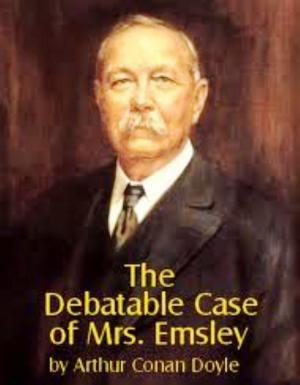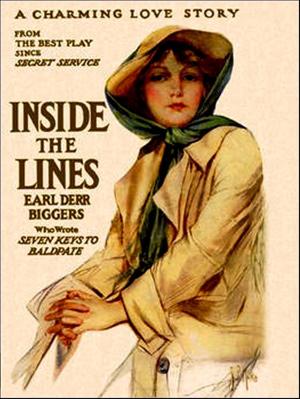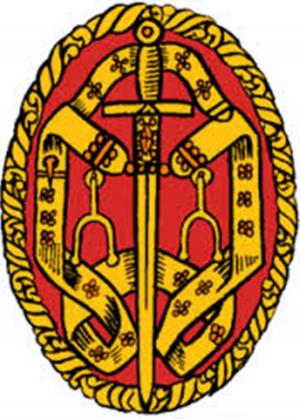| Author: | Sylvanus Cobb, Jr | ISBN: | 1230000148616 |
| Publisher: | WDS Publishing | Publication: | July 6, 2013 |
| Imprint: | Language: | English |
| Author: | Sylvanus Cobb, Jr |
| ISBN: | 1230000148616 |
| Publisher: | WDS Publishing |
| Publication: | July 6, 2013 |
| Imprint: | |
| Language: | English |
GRANADA! The simple name fills the mind with ideas of romance and more than regal grandeur. Even her misfortunes are romantic, and if she once had regal sins, we are led to pity rather than censure her. The "Last Sigh of the Moor" still overlooks the home of the long line of Moslem kings, and the handiwork of those who have long since passed away from earth still remains to tell us what Moorish Granada was.
The fifteenth century had dawned upon Spain, and the Christians had by degrees possessed themselves of all the Spanish Peninsula save Granada; but Granada still gave a home and a kingdom to the Moor, and here the Moslem held his sceptre against the mighty powers that were growing in the North. There were scenes of festivity in Granada, and magnificent tournaments, too, were held there; nor was the participation in these confined to the Moore, for Christian knights, from Spain, and France, and Germany, frequently came and joined in the lists. The Moor was wary, however, and his darkly flashing eye slept not upon his Christian visitors.
It was a bright morning in early summer. The gardens, the fields, and the forests, were clothed in their gayest vestments, and the birds sent aloft the notes of their thanksgiving in sweetly sounding, musical pecans. Near the river Guadix, and upon its northern bank, appeared two horsemen; their beasts were standing still, and the riders were gazing upon the stream that flowed before them. Back of them, towards the north, was a deep forest, from which they had just emerged, while ahead, to the southward, some twelve miles distant, a few glittering spires could be seen, and near these loomed up the bright towers of the Alhambra. Further on, the eye rested upon the snow-clad summits of the heaven-reaching Alpujarras, with the Sierra Nevada, towering aloft with its crown of regal white, the monarch of Mountain Spain.
The first of the horsemen was a young man attired in a gorgeous suit of mail. The subtle links were of the brightest steel, and they were wrought with the most exquisite skill and workmanship. Over this suit of full mail the man wore a frock of crimson silk, upon the breast of which was wrought in golden threads the cross of Leon. Upon his head he wore a steel cap, formed of nicely adjusted plates, slightly conical in its form, and from the top of which waved a triple plume of white ostrich feathers. If the cross upon the knight's breast did not at once betray the kingdom from whence he came, the rich dress of the black steed that bore him would have cleared the matter at once. Over the plates of steel that the horse wore upon his breast, and covering the back and sides of the animal, was a drapery of crimson silk, upon which was wrought in various colors of silver and gold the cross and the lion—the insignia of Christian Leon.
GRANADA! The simple name fills the mind with ideas of romance and more than regal grandeur. Even her misfortunes are romantic, and if she once had regal sins, we are led to pity rather than censure her. The "Last Sigh of the Moor" still overlooks the home of the long line of Moslem kings, and the handiwork of those who have long since passed away from earth still remains to tell us what Moorish Granada was.
The fifteenth century had dawned upon Spain, and the Christians had by degrees possessed themselves of all the Spanish Peninsula save Granada; but Granada still gave a home and a kingdom to the Moor, and here the Moslem held his sceptre against the mighty powers that were growing in the North. There were scenes of festivity in Granada, and magnificent tournaments, too, were held there; nor was the participation in these confined to the Moore, for Christian knights, from Spain, and France, and Germany, frequently came and joined in the lists. The Moor was wary, however, and his darkly flashing eye slept not upon his Christian visitors.
It was a bright morning in early summer. The gardens, the fields, and the forests, were clothed in their gayest vestments, and the birds sent aloft the notes of their thanksgiving in sweetly sounding, musical pecans. Near the river Guadix, and upon its northern bank, appeared two horsemen; their beasts were standing still, and the riders were gazing upon the stream that flowed before them. Back of them, towards the north, was a deep forest, from which they had just emerged, while ahead, to the southward, some twelve miles distant, a few glittering spires could be seen, and near these loomed up the bright towers of the Alhambra. Further on, the eye rested upon the snow-clad summits of the heaven-reaching Alpujarras, with the Sierra Nevada, towering aloft with its crown of regal white, the monarch of Mountain Spain.
The first of the horsemen was a young man attired in a gorgeous suit of mail. The subtle links were of the brightest steel, and they were wrought with the most exquisite skill and workmanship. Over this suit of full mail the man wore a frock of crimson silk, upon the breast of which was wrought in golden threads the cross of Leon. Upon his head he wore a steel cap, formed of nicely adjusted plates, slightly conical in its form, and from the top of which waved a triple plume of white ostrich feathers. If the cross upon the knight's breast did not at once betray the kingdom from whence he came, the rich dress of the black steed that bore him would have cleared the matter at once. Over the plates of steel that the horse wore upon his breast, and covering the back and sides of the animal, was a drapery of crimson silk, upon which was wrought in various colors of silver and gold the cross and the lion—the insignia of Christian Leon.















